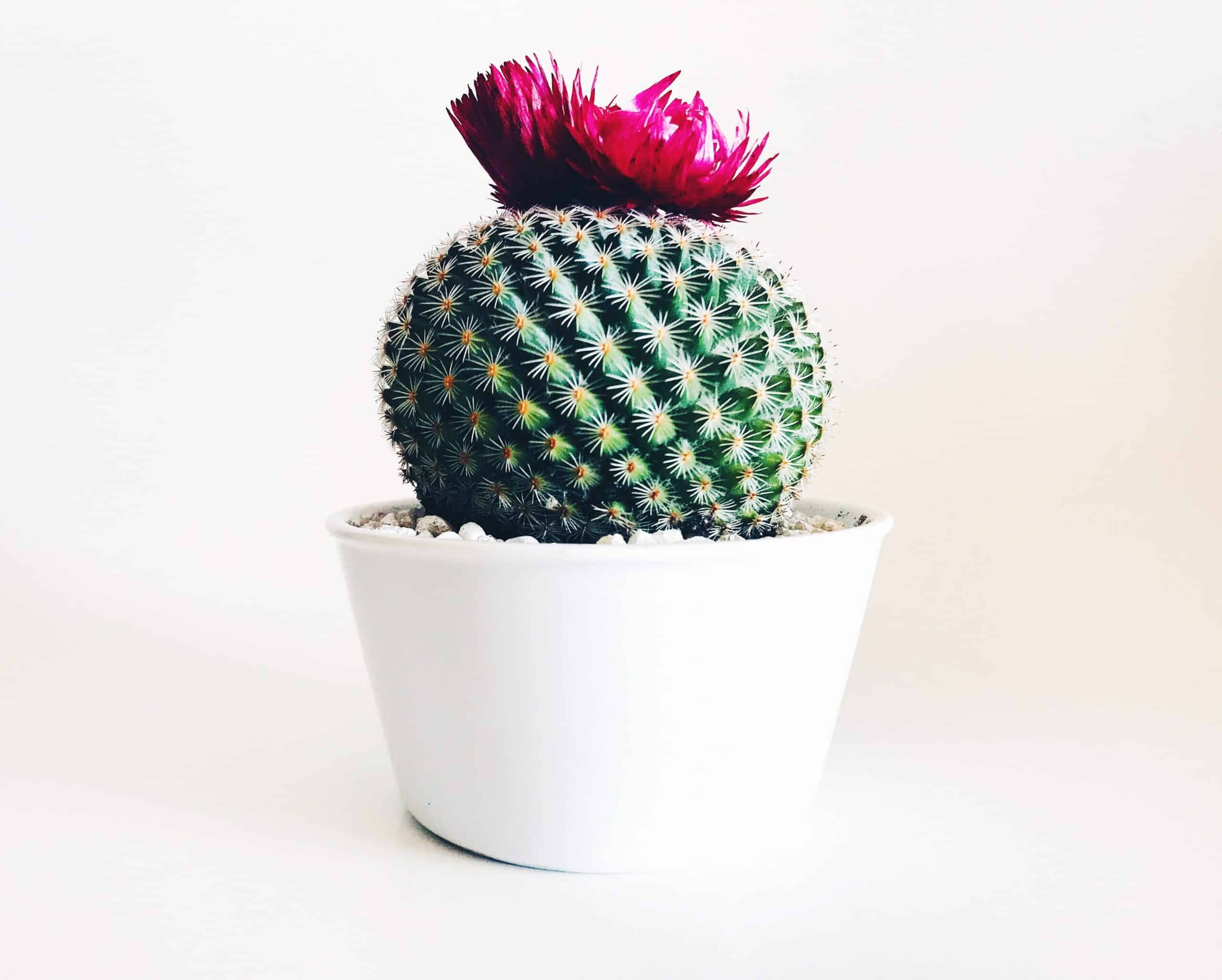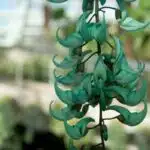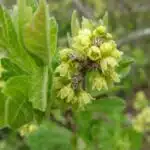Star jasmine is a beautiful flowering vine that can be grown both indoors and outdoors, depending on the climate. With its heavenly scent and delicate white blooms, star jasmine provides a wonderful addition to any garden. But it’s not just its beauty that makes it so beloved; star jasmine is also incredibly easy to care for and maintain. In this article, we’ll provide you with all the information you need to know about star jasmine and how to grow it successfully in your home or garden.
The first thing to know about star jasmine is that it thrives in warm climates with plenty of sun. While it can tolerate some shade, too much will cause its growth to slow down significantly. To ensure your plant gets enough sunlight, try planting it near a south-facing window or somewhere else that receives plenty of direct sunlight throughout the day. Additionally, when planting outside, make sure the soil has good drainage so the roots don’t become waterlogged.
Finally, when caring for star jasmine plants indoors or out, be sure to water them regularly but not too often. Be sure also to fertilize them during their growing season (spring through summer) as well as prune away any dead or overgrown branches in late winter or early spring before new growth begins. With these simple tips in mind and some basic knowledge of star jasmine care and maintenance, you’ll soon have a thriving vine full of fragrant blossoms!
Overview Of Star Jasmine
Star jasmine is an incredibly fragrant and attractive flowering plant that blooms in springtime. Take the case of Joan, a homeowner in a cold climate who was looking to add some color and life to her garden. After researching different plants, she chose star jasmine for its delicate white blossoms and beautiful scent.
In addition to being aesthetically pleasing, star jasmine is also extremely hardy, making it an ideal choice for novice gardeners or those with limited gardening space. It requires minimal maintenance and can withstand droughts as well as occasional flooding. As long as it is planted in well-drained soil and gets plenty of sunlight, star jasmine will thrive for many years with minimal effort from the gardener.
The beauty of star jasmine isn’t limited to its physical attributes – it’s also an excellent choice for those looking to attract pollinators such as bees and butterflies. Its flowers produce a sweet nectar that lures in these beneficial insects, providing visitors with essential nutrients while helping your outdoor space become even more inviting! With all these benefits, it’s no wonder why so many people are choosing star jasmine for their gardens.
Identifying Star Jasmine
Identifying star jasmine can help gardeners determine the best location for planting and care for the plant. It’s essential to know how to recognize this fragrant vine so it can be properly placed in a garden or around a home.
Star jasmine is an evergreen twining vine with glossy, dark green leaves and fragrant white flowers. The blooms appear in late winter or early spring and can grow up to six inches long. The flowers are borne on wiry stems that reach up to 10 feet in height, making it an ideal choice for covering walls, arbors, and trellises.
When identifying star jasmine, look out for the pointed oval-shaped leaves that have a smooth texture on top and fuzzy underside. The blooms have five petals that are fused together at their base with yellow stamens in the center. This makes them look like little stars when they open up!
The combination of fragrant blossoms, glossy foliage, and height make star jasmine an aesthetically pleasing addition to any garden or home landscape. With proper identification, gardeners will be able to properly place and care for this beautiful flowering vine. Seizing this opportunity is the first step toward creating a lush outdoor environment full of color and life!
Where To Plant Star Jasmine
Are you considering planting star jasmine in your garden? Before you do, there are a few things to consider. Where you plant it is key to the success of this beautiful flowering vine. In this section, we’ll discuss where you should locate star jasmine for the best results.
First, choose a spot that provides full to partial sun. Star jasmine loves the sun and will bloom more if it’s exposed to at least six hours of sunlight each day. If it doesn’t get enough light, its growth can be stunted or its flowers may not reach their full potential. On the other hand, too much sun can cause its foliage to become scorched and its blooms to fade prematurely.
Star jasmine also needs space to climb and spread out – so a trellis or arbor is ideal for getting the most from your plant! It’s important that whatever structure you choose is sturdy enough to support the mature weight of your vine once it has grown in size. Additionally, make sure there is plenty of airflow around the plant – this will help keep diseases away and encourage new growth.
To ensure your star jasmine thrives in its new home, make sure you provide ample soil drainage and water regularly during dry spells; both are essential for keeping your plant healthy! With these tips in mind, you’re well on your way towards creating a show-stopping display of fragrant white blooms in your outdoor space! Next up: understanding what growing conditions star jasmine needs…
Growing Conditions For Star Jasmine
Growing star jasmine is a rewarding experience that can bring beauty and fragrance to your garden. It’s essential to understand the plant’s specific needs in order to get it off to a good start and keep it healthy for years. Here are some of the key growing conditions for star jasmine:
- Sunlight: Star jasmine prefers full sun or partial shade.
- Soil: The soil should be well-draining, slightly acidic, and rich in organic matter.
- Watering: This plant should be kept evenly moist but not soggy during its growing season.
- Temperature: Star jasmine tolerates temperatures down to 20°F, but will not flower if temperatures dip below 40°F.
- Fertilizer: Feed with an all-purpose fertilizer once a month during the spring and summer months.
These simple conditions are key when growing star jasmine; however, it’s just as important to prepare the soil before planting. Properly preparing the soil ensures successful growth and helps create an environment where the plant can thrive.
Preparing Soil For Star Jasmine
It’s a great feeling to step out into the garden and smell the fragrant scent of star jasmine. But for that incredible experience, you must first properly prepare soil for star jasmine.
When it comes to growing conditions, every plant has different needs. Star jasmine is no different—it requires specific soil conditions in order to thrive. To make sure your star jasmine has the best start possible, follow these simple steps!
First, make sure the soil drains well. If your soil doesn’t have good drainage, you’ll need to incorporate organic matter such as compost or peat moss to improve its structure. You should also test your soil’s pH level and adjust it if necessary by adding lime or sulfur to balance the acidity. Finally, add a slow-release fertilizer before planting and incorporate it into the top 6 inches of soil with a hand rake or cultivator.
Now that you’ve prepared your soil correctly, you can move on to planting star jasmine and watching them flourish in their new home!
Planting Star Jasmine
Once you have the soil ready, it’s time to start planting your star jasmine. It’s a good idea to research the specific type of star jasmine that you’re working with, as this will determine how big of a hole you’ll need to dig and what kind of sunlight requirements your plants will need.
Planting star jasmine is fairly simple, but there are a few steps you should follow for successful results:
• Plant in an area that receives full or partial sun. • Dig a hole that is twice as wide as the plant’s root ball and no deeper than the root ball itself. • Place the root ball into the hole and fill with soil until even with ground level. • Water thoroughly at planting time and cover with mulch to retain moisture.
When planting star jasmine, it’s important to remember not to over-fertilize or over-water – too much fertilizer can burn new growth and too much water can cause root rot. Be sure to check the soil regularly for moisture levels, especially during hot months when dry conditions may require more frequent watering. With proper care and attention, your star jasmine will thrive nicely!
Now that your star jasmine is planted, it’s important to keep up with regular watering so that your plants can continue growing strong.
Watering Star Jasmine
Watering Star Jasmine properly is essential for its success in the garden. In this step, we’ll explain how to ensure your vine stays healthy and lush.
First, make sure your soil is well-draining. If you have heavy clay soil, consider adding organic matter such as compost or peat moss. This will help the plant absorb water more easily and keep it from becoming waterlogged.
Next, check the soil around the plant to see if it’s dry. If so, use a hose or watering can to give it a deep drink every few days or when necessary during hot weather. Don’t forget to water in the morning so that any excess moisture can evaporate throughout the day and not encourage fungal diseases. When you do water, aim for the base of the plant instead of splashing leaves or stems with water droplets that could carry disease.
Now that you know how to keep Star Jasmine hydrated, let’s move on to an important part of its care: fertilizing!
Fertilizing Star Jasmine
Contrary to popular belief, fertilizing your star jasmine isn’t actually necessary for it to thrive. In fact, too much fertilizer can be detrimental and cause growth problems. Even so, if you want to give your plant an extra boost then a light application of fertilizer is ok!
Now, the type of fertilizer you use is important. You should look for one that’s specifically formulated for evergreens or acid-loving plants like star jasmine. It’s also a good idea to apply a slow-release fertilizer in late winter or early spring. This will help keep your plant healthy and provide the nutrients it needs throughout the growing season.
Finally, it’s important to remember that when it comes to fertilizing your star jasmine, less is more. Too much can damage the roots and ultimately lead to health issues down the line. So make sure you follow the directions on the product packaging and exercise caution when applying fertilizer – a little goes a long way! With these tips in mind, you’ll be well on your way towards having a beautiful and healthy star jasmine in no time! Now let’s move on to pruning…
Pruning Star Jasmine
Pruning star jasmine is a great way to keep your plant healthy and looking its best. After all, star jasmine is an evergreen climber that can grow very quickly in the right conditions! But how do you know when and how to prune it? Let’s explore.
When it comes to pruning star jasmine, timing is essential. In the summertime, you’ll want to trim back any overly long stems as they appear, while in wintertime you’ll want to make sure you don’t overdo it as this could damage your plant. Here are some helpful tips for pruning:
• Summer:
- Trim off any long stems that appear.
- Make sure not to remove more than one-third of the total growth at any given time.
• Winter:
- Cut off any dead or diseased branches.
- Prune carefully as too much pruning can damage your plant.
Pruning star jasmine can be tricky business, but done correctly it can really help your plant stay healthy and looking its best for many years to come! With these tips in mind, you should have no problem keeping your star jasmine looking vibrant and thriving.
Common Problems With Star Jasmine
Janet had a star jasmine in her garden that was thriving, but she started to notice signs of trouble. The leaves were yellowing and wilting and the plant wasn’t flowering like it used to. Janet soon realized that she was facing common problems with star jasmine.
Common problems with star jasmine can be caused by a variety of factors. These include too much or too little water, inadequate drainage, too much direct sun, soil that is either too acidic or alkaline, fertilizer imbalance, and pests and disease. Poor pruning techniques can also lead to unhealthy growth patterns and stunted blooms.
Fortunately, most of these common problems can be remedied through proper care and maintenance. Choosing the right location for your star jasmine is key; make sure you take into consideration things like sunlight exposure, soil type and moisture levels when planting it in your garden. Watering regularly (but not excessively) will help keep plants healthy, as will adding appropriate amounts of fertilizer. Pruning should also be done correctly to ensure healthy growth habits and strong bloom production. Finally, keeping an eye out for signs of insect damage or fungal infection can help prevent further spread of any pest or disease issues that may arise.
With the right knowledge and care, Janet’s star jasmine made a full recovery – now she just needs to learn about handling potential pests and diseases!
Pests And Diseases Of Star Jasmine
Star jasmine is an evergreen climbing plant that offers beautiful foliage and white blooms. It’s also a hardy, low-maintenance plant that doesn’t require much attention to thrive. However, even these resilient plants can encounter problems. Surprisingly, pests and diseases are one of the most common issues with star jasmine.
It’s important to be aware of the potential pests and diseases that can affect your star jasmine so you can take preventative measures. There are over 20 known pests and diseases associated with star jasmine, such as scale insects, mealybugs, root rot, powdery mildew and leaf spot infection. The best way to protect your plant from these threats is to keep it in good health by providing optimal growing conditions – proper sunlight exposure, adequate drainage, sufficient water and well-draining potting soil – and regularly inspecting it for any signs of infestation or disease.
In addition to preventive measures, there are some treatments available for pest infestations and fungal diseases on star jasmine plants. Applying neem oil or insecticidal soap can help get rid of many types of pests while fungicides may be used to treat fungal infections. When using any chemical products on your plant, make sure you read the label carefully and follow all instructions for safe use.
By understanding the pests and diseases that can affect your star jasmine and learning how to properly care for it, you can ensure its health for years to come. With the right maintenance practices in place, you’ll soon be enjoying its fragrant flowers! Next up we’ll look at propagation methods for star jasmine so you can create more of these stunning plants in your garden.
Propagation Of Star Jasmine
Propagating star jasmine is a great way to increase your plant collection without having to purchase more. However, it’s important to know the right methods and techniques so you can get the best results.
The most common method of propagating star jasmine is by cuttings. Cut a section of healthy stem, making sure it has some leaves attached, and strip the bottom leaves off. Dip the cutting in rooting hormone and place in a pot filled with moist perlite or vermiculite. Keep the soil moist and place in indirect sunlight until new growth appears.
Alternatively, star jasmine can be propagated from layering stems as well. Bend down a stem until it touches the ground and use a clothespin or rock to hold it in place. Once roots have formed, sever the stem from the mother plant and pot up as usual. This method allows you to create more plants relatively quickly and easily.
With these propagation techniques, you’ll soon have an abundance of star jasmine plants that you can use in your landscaping projects!
Using Star Jasmine In Landscaping
Star jasmine is a stunning and fragrant plant that can be used to enhance any landscape. For example, in the garden of Maria and Mark, star jasmine was used to create a living wall that not only looks beautiful, but also provides privacy from their neighbors. This type of landscaping with star jasmine provides homeowners with an aesthetically pleasing way to spruce up their outdoor space while also providing beneficial functions such as privacy screening or noise reduction.
When using star jasmine in landscaping, there are several design options to consider. Depending on the desired look and feel of the space, homeowners can choose between planting a single vine or creating a living wall by training multiple vines onto a trellis or other structure. Additionally, trained vines can be used for topiary designs for an attractive and unique look in the landscape.
Another benefit of using star jasmine in landscaping is its versatile nature; it can be grown in containers or directly into the ground. Star jasmine’s ability to grow in various locations makes it perfect for adding color and texture to both small spaces like balconies and patios as well as larger gardens and yards. With so many options available, it’s easy to find a design that suits any outdoor area.
No matter what design is chosen, star jasmine is an excellent choice for enhancing any outdoor space with its beauty and scent. With careful selection of varieties, thoughtful placement within the landscape, and proper care, this plant is sure to add value to any home’s exterior environment.
Suggested Varieties Of Star Jasmine
When it comes to choosing the right variety of star jasmine, there are a few different types to consider. Each has its own unique characteristics and benefits that can make it a great choice for landscaping projects. Here are some of the best varieties to consider:
• Confederate Jasmine – This is one of the most popular varieties due to its fragrant white flowers and glossy green foliage. It’s fast-growing and tolerant of partial shade, making it a great choice for covering a trellis or wall.
• Dwarf Star Jasmine – This variety is more compact than other types, growing only up to 3 feet tall and 1 foot wide. It produces clusters of white flowers in the spring and summer months that have an intense fragrance. The foliage is also evergreen, providing year-round color in the landscape.
• Variegated Star Jasmine – This type has creamy yellow leaves with green edges, giving it an eye-catching look in any garden or landscape setting. The fragrant white flowers appear in late spring and early summer, adding even more beauty to the plant.
No matter which variety you choose, star jasmine makes an excellent addition to any garden or landscape setting due to its low maintenance needs and hardy nature. With proper care, these plants can thrive for many years with minimal effort from you! Plus, their fragrant blooms are sure to attract plenty of pollinators into your yard as well. All that’s left now is finding out how best to grow this versatile vine!
Tips For Growing Star Jasmine
Growing star jasmine is like taking a journey into a secret garden of beauty. Its luscious, evergreen foliage and fragrant white flowers create an oasis of serenity in any outdoor space. With the right tips, anyone can make their own secret garden with star jasmine.
First, star jasmine needs soil that’s well-draining and slightly acidic. If this isn’t available naturally, you can amend it with organic matter to help it reach those ideal conditions. Second, provide plenty of sunlight for your plant; this will help promote flowering and keep it healthy. Third, water regularly but take care not to overwater as this can lead to root rot.
Finally, with the right care and attention, your star jasmine should thrive! Prune back any tangled or unruly growth to encourage more bushiness and trim away dead flowers for new blooms throughout the season. With these simple steps in mind, you’ll have a thriving star jasmine in no time!
Frequently Asked Questions
How Long Does It Take For Star Jasmine To Flower?
Star jasmine is a fast-growing vine that produces fragrant, star-shaped white flowers throughout the spring and summer months. It’s estimated that this plant can grow up to 20 feet in height and width, however it mainly depends on how it’s cared for.
If you’re looking to add some color to your garden, you’ll be glad to know that star jasmine takes roughly three weeks to flower from the time of planting. This flowering period can be extended if you provide your plant with ample sunlight, regular watering, and an occasional trimming. It’s also important to note that star jasmine prefers well-drained soils and is not suitable for wet areas.
Once established, star jasmine will reward you with an abundance of scented blossoms for many years to come. With just a little effort and care, this fragrant climber can bring beauty and fragrance into any garden or outdoor space. Plus, its hardy nature means it can easily thrive in all kinds of climates. So if you’re looking for a fast-growing option with minimal maintenance requirements then star jasmine is definitely the way to go!
Is Star Jasmine Toxic To Pets?
As a homeowner with pets, we all have one major concern: Is star jasmine toxic to our furry friends? The answer might surprise you.
When a plant is as fragrant and beautiful as star jasmine, it’s easy to be captivated by its charms. But we must remember that just because something looks good doesn’t always mean it is safe. With its cascading white petals, this vine-like shrub can be a stunning addition to any garden – but only if it won’t harm your pets.
Fortunately, star jasmine is non-toxic to both cats and dogs according to the ASPCA (American Society for the Prevention of Cruelty to Animals). Its evergreen foliage is not only a delight for us humans, but also provides our animals with plenty of shady spots during the hot summer months. So go ahead and enjoy this lush beauty without any worry!
How Often Should Star Jasmine Be Fertilized?
“A stitch in time saves nine” is an old adage that perfectly encapsulates the importance of regular fertilizing for star jasmine. It’s essential to feed this beautiful flowering vine with a balanced fertilizer in order to keep it healthy and thriving. But how often should you fertilize your star jasmine?
The answer depends on when your plant blooms. If your star jasmine flowers in the spring, then you should fertilize every four to six weeks during its bloom period. This will help encourage more flowering and promote healthier foliage. If your star jasmine blooms in the summer or fall, then you should fertilize once a month while the flowers are developing. Additionally, if you’re using slow-release fertilizer, it’s important to apply it according to the directions on the package so that your plant gets enough nutrients without being over-fed.
It’s also important to consider what type of fertilizer you’re using for your star jasmine. A balanced fertilizer with equal parts nitrogen, phosphorus, and potash is best for encouraging strong growth and promoting flowering. However, too much nitrogen can lead to excessive leaf growth at the expense of blooming. Be sure to read the label on any fertilizer product before applying it to ensure proper nutrition for your plant.
Fertilizing regularly is key for maintaining a healthy and abundant star jasmine vine throughout its bloom season, so make sure you’re feeding yours at least once per month during its active growing period!
What Type Of Soil Should Be Used For Star Jasmine?
When it comes to growing star jasmine, soil is key. To ensure your plant has the best start in life, you’ll want to make sure you choose the right soil. But what type should you use?
The answer lies in the plants’ native environment: India and China. Star jasmine grows well in soils that are rich and loamy, with plenty of organic matter and good drainage. Aim for a pH between 6-7.5 – slightly acidic but not too much so. The soil should also be moist but not saturated.
Adding compost or aged manure can help amend the soil and bolster its nutrient content. This will give your star jasmine all it needs to thrive, as well as helping it better resist disease and pests. Additionally, mulching around your star jasmine can help retain moisture and keep weeds down, allowing it to focus its energy on growth rather than battling other plants for resources.
By providing star jasmine with the right kind of soil, you can give it the best possible conditions for healthy growth – leading to years of beautiful blooms!
How Much Sun Does Star Jasmine Need?
As we look to understand the needs of star jasmine, it is important to consider how much sun the plant requires. Indeed, an anachronism is appropriate here: like a vintage wine, star jasmine needs just the right amount of sunlight in order to thrive.
The key is finding a balance between enough sunlight for photosynthesis and not too much that may leave the plant wilted or burned. Generally speaking, star jasmine prefers about four to six hours of direct sunlight each day; however, if your climate is especially warm or dry, then you may want to cut back on this amount slightly. Additionally, if your area receives intense heat during certain times of the year, you’ll want to provide some additional shade during these periods.
Given its preferences for light exposure, star jasmine makes an excellent choice for areas such as patios and balconies where there is a bit more indirect light throughout the day. Thus, it’s possible to enjoy this fragrant vine without having to worry about providing too much sun. Just remember that with any plant care regimen—including providing adequate sunlight—you’ll need to be mindful of changes in weather and adjust accordingly so that your star jasmine can stay healthy and happy!
Conclusion
Star Jasmine is a beautiful, fragrant flower with many benefits. It can be used to effectively cover walls and fences, provide a pleasant aroma, and even deter pests from your garden. However, the best way to make sure your Star Jasmine is thriving is through proper care and maintenance. With the right soil, fertilization, sun exposure and watering schedule, you will have an abundance of these lovely flowers for years to come!
The irony of all this is that while caring for Star Jasmine requires special attention and dedication, it actually requires minimal effort. Once you have established its environment and created the right conditions for growth, it will thrive on its own with little maintenance required. This makes it an ideal choice for those looking to add beauty to their outdoor spaces without having to dedicate too much time or energy.
In conclusion, Star Jasmine is an attractive addition to any outdoor space that rewards diligent caretakers with an abundance of fragrant flowers throughout the growing season. With minimal effort required for upkeep and plenty of rewards in return, this plant truly does offer something special for everyone who chooses to cultivate it in their garden.












![How To Grow And Care For Corkscrew Vine 18 Strophanthus preussii [Corkscrew Flower, Poison Arrow Vine, Spider Tresses, Tassel Vine] Apocynaceae](https://green-life.blog/wp-content/uploads/2023/04/KW5aFOG5S3jq-150x150.jpg.webp)
















